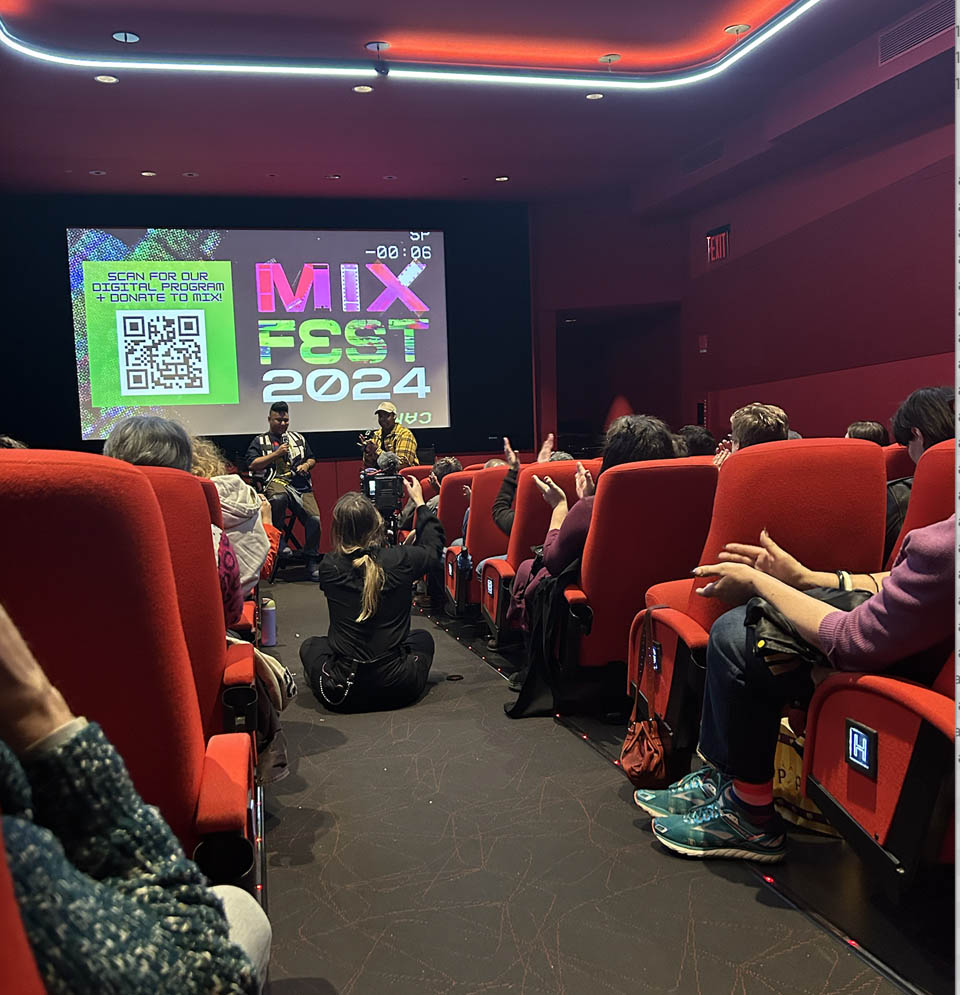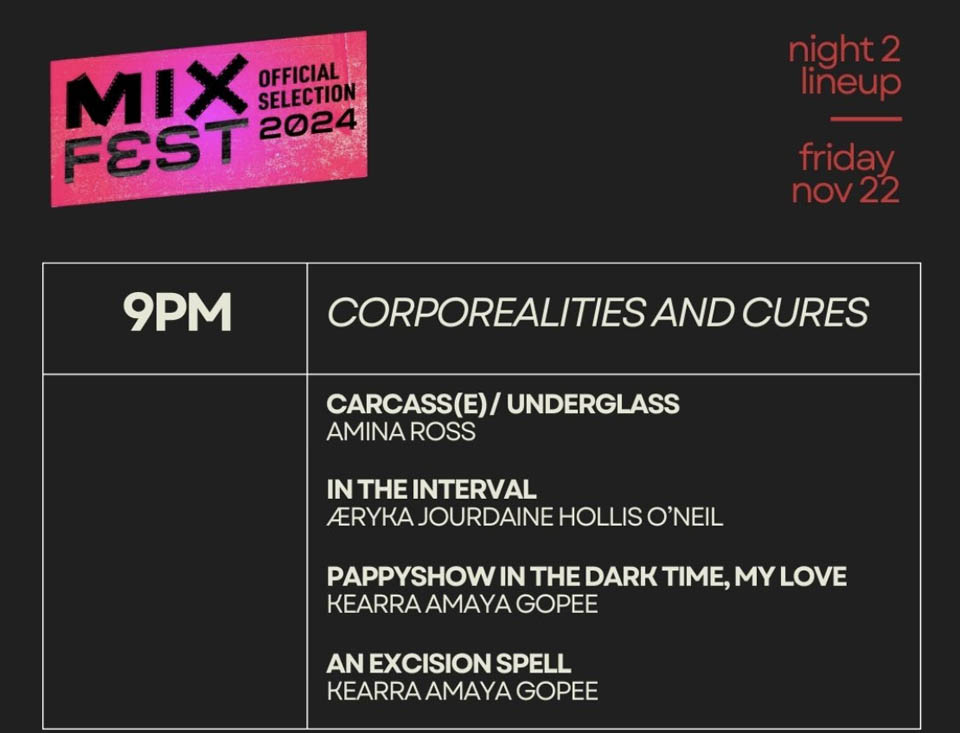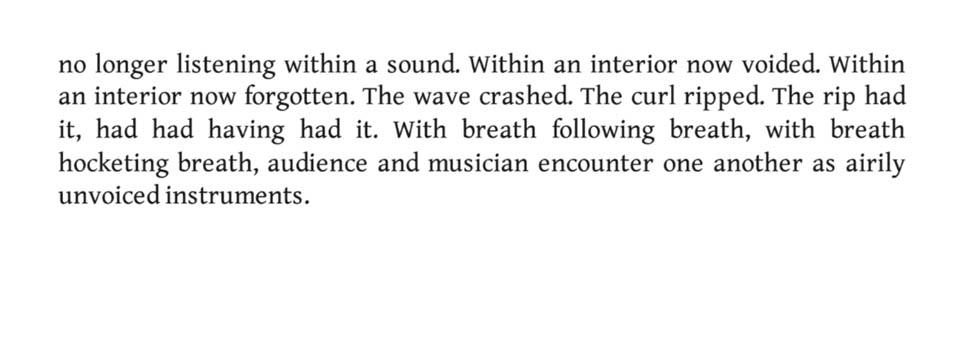
On Friday night I went to the Quad cinema to see the 9 pm program, Corporealities and Cures, at the newly relaunched MIX, New York’s storied queer experimental film festival. I have a long history with MIX—audience, supporter, programmer, respondent, filmmaker, previous Board member—and this iteration feels new, vibrant, young, and very much needed (as it always has been. There are very few festivals that show experimental, let alone queer and experimental media). We are informed in a detailed explication of its latest phoenix emergence in a longer history of such rebirths, that this return is a result of COVID isolation.
The program I saw was a flawlessly curated response to said seclusions, reaching toward connection. Each of the four works was stronger for its breathren: a beautiful body of experimental work on Black queer and trans health, rage, and healing flowing into each other: one voice, voices.

This newly resurrected blog’s week 1 interests have emerged as considerations of blogs, clocks, vision, the history and representation of slavery’s afterlife, and more because of where I have gone and what I have encountered seeking solace after the election. I continue this search, now considering the role of technology in this period of change via another resurrection of a previous format (the MIX film festival). I return to the role of the audience (raised in the previous post) as a way to live in the interval between the election and the inauguration (a primary concern of Aeryka Jourdaine Hollis Oneil‘s, In the Interval, a personal-academic-artistic hybrid work revealing familial and bodily harm for the artist, and their communities, as Black trans people witnessing an upsurge of violence during another interval, the dull confusion of COVID lockdown).
One way to live in a time of transition, change, waiting, and uncertainty is to go there, be there, take it in, the interval, help make it our own, momentarily and together. In the case of corporealities and cure, the audience took in the artists’ expression; the air and sound in the room; the images on the screen; the warmth of people known and unknown. And, as I expressed previously, if you are not going to in-person events right now, much of this is possible on a computer, if you can evacuate your space of competing screens, if you can join with others (virtually, in person) to co-hold witness and encounter.
I return to the audience, learning from my experiences at MIX, because the most beautiful thing happened with ours on Friday night. Amina Ross was at the front of the theater for the Q and A, as you can see in the still that opens this post. But instead of answering questions, or expressing more about their amazing work, Carcass(e)/Underglass—an intense amalgam of a detailed but loving depiction of the butchering of pigs encased by poetry about other undoings and intimacies—Ross invited Black trans and queer audience members to speak. The room opened out into not a Q and A, or a back and forth, but rather a swell of response about the fear of transitioning, the role of rage, the use of score. Most of us listened with intensity of focus. The words and their people were real; this feedback was our respect.

In a previous project, a poem “Forget THE AUDIENCE” was generated in a queer feminist fake news poetry workshop that I co-led in Brighton England with the group Devil’s Dyke in 2018.

At the workshop, “the audience” was consistently hailed by these participants as something like the putative ominous but desired collection of imagined but felt followers who watch, judge, or don‘t watch you (to your shame). This audience is very far from your reality. Your function is to grow it but never really know it. Your job is to be their product. Your art is to promote yourself to them. Your audience loves and hates you. It makes you (hate yourself). In this poem, built collectively from somatically-induced phrases about falsity and social media initiated by poet co-facilitators, that awful audience can be forgotten by the body: an instrument that holds others because it listens, feels, and loves what is in front of it.
I am suggesting that an audience one can join (often but not always with others) by being in and of a set of human receptive devices is not the same things as the audience one has been trained to want (especially via social media). One is a lived fact; the other an organizing fiction! One is made by comrades; the other is made for capital! To be in an audience of experimental Black trans cinema can be a practice in shared space and time predicated on being open and generous, supportive and interactive, activated and awed by the intense and sustained work of others, as well as those witnessing in the room with you.

The interval I encountered at MIX, the one set into motion by the four videos, and then Ross; this was an interior “now voided” as David Grubbs explains, an interior to be filled by the art and breath of others. This is both hard and easy to do. Hard, because people need to organize it (get the funds, and the room; curate it; promote it. Thank you MIX 2024!). And easy (for those whose inhalation is not clouded) because once assembled, it is no more, or less, than one voice, voices; “breath following breath.”